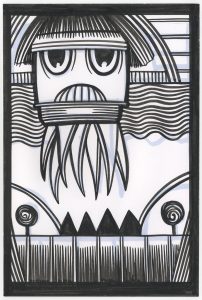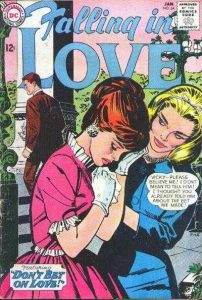I finally stared watching movies again. Why did I stop watching movies? I’m not exactly sure but the short explanation is that they got too long for me. Or that I lost the patience to sit still that long. It’s really not about the movies it’s about me. I can’t sit down and concentrate on a movie for as long as I used to be able to.
I can still watch TV but I’m not a TV binge watcher. One TV show is either 42 or 22 minutes long without commercials. I usually watch between an hour and a half and two hours of TV a night before I go to bed. It relaxes me and calms me down. Otherwise I get tired and wired. That’s how I describe my state of being when I’m still wide awake and want to get things done but my concentration is shot for the day and I have no energy left to actually do anything but be restless and maybe pace. It’s like I want to draw but can’t anymore. Sitting down and relaxing is what I should do because tomorrow is another day but it’s not always easy to do without the distraction of entertainment.
Also with TV I can stop between shows and brush my teeth, get a drink, or whatever. I can’t do that with a movie because I’d miss parts. Movies demand your attention all the way through for the full two hours. I don’t seem to have that in me very often anymore. I’ve watched a few full movies over the last couple of months. I finally caught The Guardians of The Galaxy Volume Two and enjoyed that one plus I watched the two John Wick movies which were good but that was about it for the winter. Maybe there were a couple of more in there that I’m forgetting right now but not a whole lot more.
Meanwhile over this past weekend, plus a couple of days, I’ve watched three movies. What’s the difference you ask? I finally decided to not watch the movies all the way through at once. Y’see, I always have twenty minutes to half an hour to watch something. I do my exercises after diner and usually have on a TV show while I do them. Since I stand and work I sometimes need twenty minutes to sit in a chair and rest. I can put something on then too. I’ve run out of or gotten bored with half an hour TV shows so why not put a movie on? I can always catch the rest of it later. That’s become my attitude.
A second factor is that I can also watch the movie on my iPad. Not always but sometimes. As easy as it is to watch a movie on my TV occasionally it seems like too much effort. I have to turn on the TV, turn on the stereo, wait for the TV to boot up and connect to my wireless network, and then pick something to watch. It’s not like the process takes more than a minute or four but opening up my iPad and launching a movie watching app takes seconds.
It’s a different experience watching a movie on an iPad. One of the good things about it is that the picture is crystal clear and taken in at a glance. I know most film makers want you to see their movies on the big screen but with a little screen it’s easier to see the composition. I’ve found that sometimes scenes can look prettier on the small screen because of that. Plus there is an intimacy when holding an iPad in your hands and watching something. Of course that’s a drawback too. You have to hold the iPad and that gets tiring after a while. It’s a good thing I don’t do it for that long.
One more thing that has annoyed me about watching movies is the sound. I’ve got a good sound system hooked up to my TV so that’s not the problem. The problem is that I like to watch action movies. They have lots of gunfire and explosions. The dialog happens at one level of volume and then that’s cranked up for the action scenes. I know that’s the way the film makers want it but I’m always turning the volume down during the action scenes. I don’t need super-loud gunfire, tires screeching, or explosions in my movies. It doesn’t help me instead it takes me out of the movie. Since TV shows have less of a budget there seems to be less of that super-loud noise. At least when I’m watching on my iPad the volume isn’t so loud.
What movies did I watch this weekend? Let me tell you. The first was Den of Thieves. I think that one was over two hours long and I watched in in three or four pieces. It was pretty good. It was a caper film that we got to see from the point of view of both the police and the criminals. Lot’s of characters and lots of action plus it kept me guessing. There was also a lot of moral grey area so I wasn’t sure who I was rooting for. Did I want the criminals to succeed or not? I think that was handled well.
The second movie was The Commuter. Another action movie that takes place on the Metro North train that runs between Cold Spring and Grand Central Terminal. It was also a pretty good. It starred Liam Neeson as an ex-police officer caught in an impossible situation on his commute home as evildoers force him to find a hidden person on the train. Good stuff with lots of tension. Even with breaks in between scenes.
The third and final movie was The Accountant. Yet another action movie with Ben Affleck as an accountant who has really good combat skills that come in handy when some rich criminal wants him dead. It had and interesting and unusual climax as Affleck squared off against the final end-battle boss. Sometimes these action movies are very much like video games.
So there you go. Half an hour at a time is the way I like my movies now. Just enough time until I want to get up and move around a bit.




